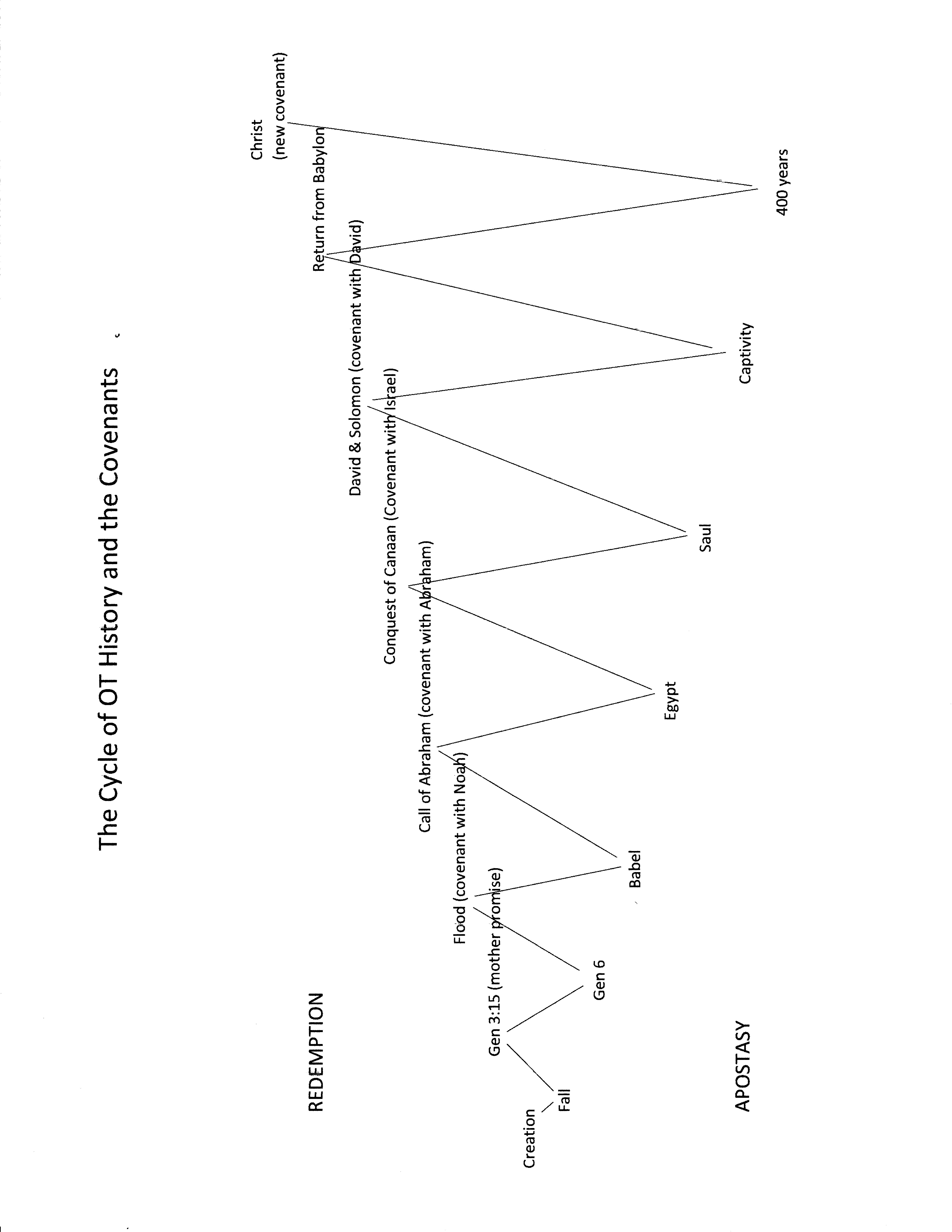In the post immediately preceding this one, we saw that God answered the sin of Babel in two ways. He judged the wicked by confusing the language and scattering men over the earth. He saved the seed of the woman by calling Abraham. This pattern of spiritual crisis for the seed of the woman and redemption by the grace of God is the basic pattern of Old Testament history. We are all familiar with it in the book of Judges, but we see it from Adam all the way to Christ, as illustrated by the chart below.

Another striking feature of this cycle is that God accomplished redemption by the promises of his covenant. The chart below duplicates the one above, but adds also the major covenants of God with Adam, Noah, Abraham, Israel, David and Christ. In each case, these great covenants follow a time of apostasy or spiritual crisis for the seed of the woman.

God is making no new covenants today because he has fulfilled and is now fulfilling all the covenants he made with his people in the Old Testament. Christ is the seed of the woman (Gen. 3:15 and Gal. 3:16), the beginning of the new creation promised to Noah (Col. 1:18), the seed of Abraham (Matt. 1:1), the true temple, high priest and sacrifice, and the Son of David. What God was unfolding to his people in the Old Testament, he has fulfilled for us in Christ.
Nevertheless, in our own spiritual crises we still have his promise of eternal salvation. “Thus God, determining to show more abundantly to the heirs of promise the immutability of His counsel, confirmed it by an oath, that by two immutable things, in which it is impossible for God to lie, we might have strong consolation, who have fled for refuge to lay hold of the hope set before us” (Heb. 6:17-18). In our own spiritual crises we lay hold of the promises of the covenant and the unchangeability of our God. God’s covenants have a very practical purpose, the strengthening of our faith so that we may endure to the end.